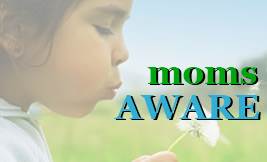The Naturally Healthy Bathroom
It makes sense to pay careful attention to rooms where potential plumbing problems and pathogens abound. How do I clean without harsh chemicals? How do I keep the environment free of mold and mildew? Here are a few suggestions for keeping your bathroom clean, fresh-smelling, and healthy.
Mold Prevention
Check the baseboards. Are they soft to the touch? If so, you may have a mold problem.
Check the distance between the tub and the drywall. Drywall is always a potential host for mold because of the combination of darkness, moisture, and cellulose, which offers food for mold growth. If the drywall comes close to the side of the tub, consider installing splash guards to prevent drips and splashes. (AFM Safecoat offers a non-toxic caulking compound that's useful for applying the splash guards.)
If you think you have a mold problem, consider testing your bathroom. See our Where Do I Begin? article to learn more.
See our Mold Prevention Tips page for additional suggestions on preventing bathroom mold.
Shower Curtains
Choose shower curtains and curtain liners carefully. Vinyl shower curtains emit hazardous chemicals such as DEHP, a phthalate that is a suspected carcinogen and has been linked to hormonal disruption in humans. See this study by the Center for Health, Environment and Justice for more information.
EVA (ethylene vinyl acetate) curtains offer an excellent alternative to vinyl. EVA is chlorine- and phthalate-free. Washable fabric curtains are chemical-free and can be laundered weekly to prevent mold growth. Glass doors are another excellent option.
Cleansers
Any non-toxic cleaners you use in other parts of the home can also be used in the bathroom. White vinegar (diluted or full strength) is the best all-around cleaner and can be used to clean tubs, toilets, floors, and even mirrors.
For added protection against mold and mildew, add several drops of tea tree oil and grapefruit seed extract (GSE) to the white vinegar.
For those who find the smell of tea tree oil or white vinegar offensive, consider adding cinnamon essential oil or pine essential oil to the diluted vinegar. Lime also helps soften the odor.
An odorless option is 25 drops of GSE blended with 1 c. water. Combine ingredients in a spray bottle and use as you would white vinegar. No rinsing required.
Scrubbers
Powdered sugar shaker jars make great containers for scrubbers.
Baking soda makes a simple scrubber. Place in jar and sprinkle onto surface.
For a heavy-duty scouring powder, combine 1/2 c. baking soda with 1/2 c. washing soda. This mixture will require extra rinsing.
For a fragrant scouring powder, combine 1 c. baking soda with 1/4 c. crushed and dried rose petals. Add 2 drops rosemary essential oil.
Toilet Bowls
If needed, wear plastic gloves and remove toilet bowl stains with a pumice stone.
Cleaning the toilet bowl involves two steps, which can be done in either order:
- Pour 1 c. borax into the toilet. Let sit overnight. Clean with toilet brush in the morning.
- Pour 1/2 c. white vinegar into bowl. Add 1/2 c. baking soda. As the vinegar neutralizes the soda, a fizz is created, which aids in the cleaning process.
After the bowl is cleaned, add three drops tea tree oil (or essential oil of choice) and allow to sit in the water until the next use.
Disinfectants
- Hydrogen peroxide. For added protection, follow the white vinegar cleanser/toilet bowl cleaner with 3% hydrogen peroxide. A study done at Virginia Polytechnic Institute and State University concluded that this combination kills almost all Salmonella, Shigella, and E. coli O157:H7 bacteria. See this article for more information.
- Vinegar of the Four Thieves. This recipe has been passed down since the time of the Black Plague, when robbers rubbed a mixture of herbs and vinegar on their bodies to protect themselves from certain death. The antibacterial herbs vary from recipe to recipe. This is adapted from the book Better Basics for the Home:
Place a handful each of dried lavender, rosemary, sage, wormwood, rue, and mint in a 1/2 gallon glass jar. Pack them in tightly. Pour raw organic apple cider vinegar over the herbs, covering them to within 4 inches of the top. Cover jar tightly and set in a cool, dark place for 3-6 weeks. Shake jar daily or several times a week.After the allotted time, strain. Pour strained vinegar into spray bottles. Dilute if desired.
This can also be spritzed into the air of a sickroom. Be sure to avoid eyes and mouth.
Antibacterial Hand Soap
Conventional antibacterial soaps contain triclosan, a synthetic antimicrobial agent used in a wide variety of household and personal care products. (See this article to learn more about the hazards of triclosan.)
A simple alternative begins with a hand soap pump bottle. This can be reused or purchased new. Fill with a mixture of 1 c. filtered water and 3 tbsp. liquid castile soap. If refilling a foaming soap dispenser, use less castile soap. To extend the shelf life, add 3 drops grapefruit seed extract. You can also add several drops of lemon or lavender essential oil.
Drain Cleaners
Plungers or plumber's snakes are often needed for clogged drains. For minor backups, pour 1 c. washing soda into water around drain. Water should go down. If not, try adding 1 c. white vinegar. Use washing soda weekly to keep drains flowing freely.
Feel free to transition into these products slowly, taking it one step at a time. Once you try them, you may never buy expensive hand soaps, cleansers, or scrubbers again!

